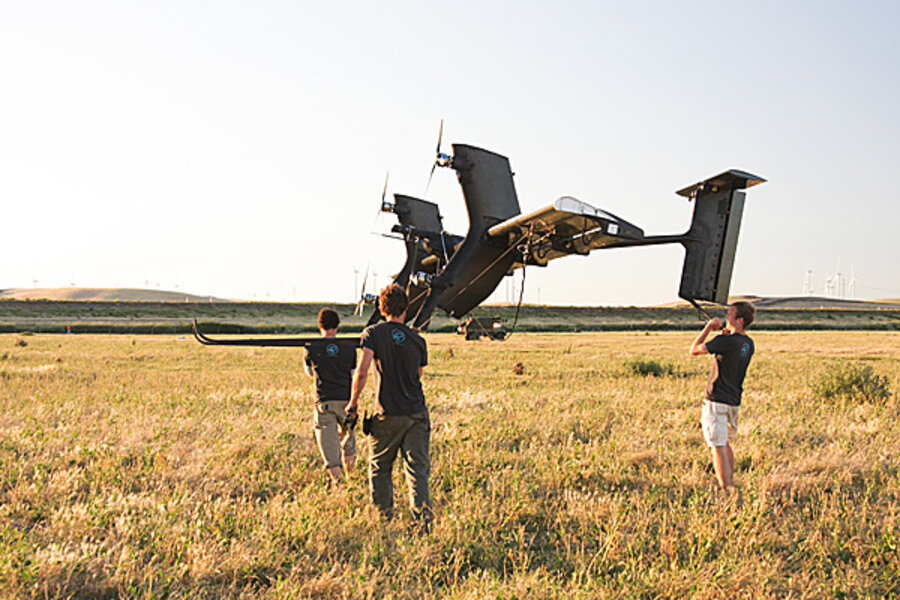Google kite? Tech giant buys 'flying windmill' firm Makani.
Loading...
Google has set its sights on an unexpected target: a tethered, flying wing that generates power as it loops through the sky.
The tech industry giant has acquired Makani Power, a California-based developer of airborne wind power – essentially wind turbines without the pole.
Google has long shown interest in clean energy, but mostly as a cost-efficient, environmentally friendly way to power its own operations. Renewables make up 30 percent of its energy use, according to Google, and the company hopes to install enough solar panels and buy enough wind power to go completely carbon-free.
Now, Google X, the company's secretive research and development arm, is taking a vested interest in directly powering what could be a part of the clean-energy future.
"Google X is focused on real atoms and not bits," Larry Page, Google's chief executive, said during the company's developers conference earlier this month. "Part of why is they feel there’s a lot of opportunity there."
Makani's Airborne Wind Turbine (AWT) is a tethered wing measuring about 26 feet across with turbines that act as either generators or propellers. During takeoff the propellers launch the craft from a perch to anywhere between 800 and 1,950 feet above the ground. Think of a kite that makes a vertical loop in the sky. The AWT loops much the same way, mimicking the path of a traditional wind turbine. The wing-mounted rotors become generators, converting the rush of the wind across the wing into electricity.
Makani has developed a prototype capable of generating 30 kilowatts of power. It hopes to create a 600-kilowatt AWT for utility scale generation at a cost below conventional solar and wind. The AWTs could be clustered in the same way traditional turbines make up wind farms.
The payoff could be big. Wind is stronger the higher and bigger you build, but traditional turbines are limited by the mast that holds them aloft. Makani's AWT, and other experiments in airborne wind power, free the turbine from some of its current engineering limits. The AWT flies higher than a traditional turbine and covers a greater diameter. It also uses less than 10 percent of the mass of a conventional turbine and is a fraction of the size.
Combine those advantages and you get a turbine that, according to Makani, could produce 50 percent more energy at half the cost of a traditional turbine. Throwing the resources of Google behind the project certainly can't hurt:
"This formalizes a long and productive relationship between our two companies, and will provide Makani with the resources to accelerate our work to make wind energy cost competitive with fossil fuels," the company wrote in a reaction to the acquisition on its website.
Of course, that could take a while, if it comes at all. The path to viable clean energy is paved with failed, fanciful ideas. Indeed, Mr. Page seems to encourage it.
Astro Teller, the director of Google X, recounted what Google's chief said to him when proposing the acquisition of Makani: “He said we could have the budget and the people to go do this,” Mr. Teller told Bloomberg Businessweek in a story this week about Google X, “but that we had to make sure to crash at least five of the devices in the near future.”
Makani's prototype raises some concerns about conflict with air traffic, but the craft would remain well below normal commercial and civilian air traffic, the company says. Some criticize the death toll inflected on birds by wind turbines, but Makani says its AWT flies above most birds and its absence of a tower discourages nesting.








